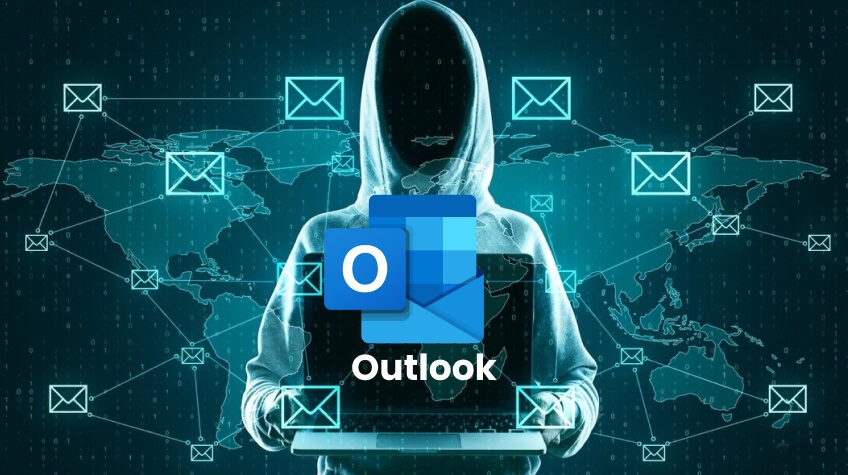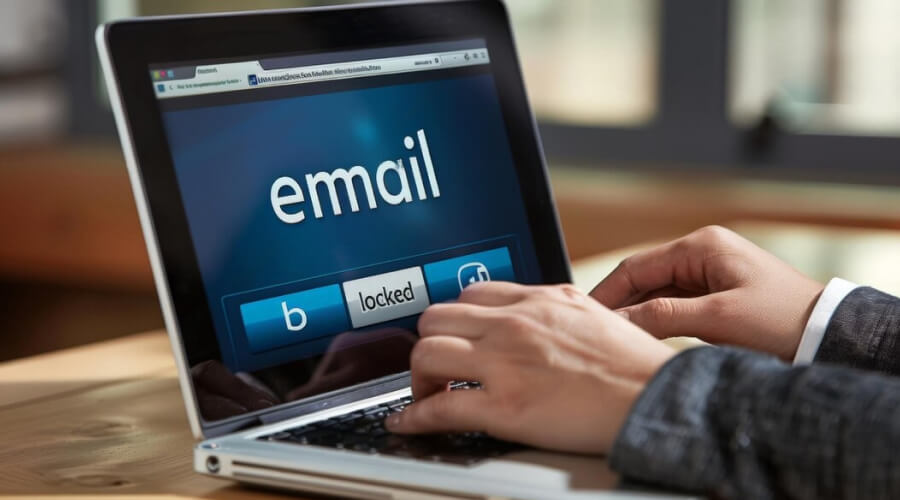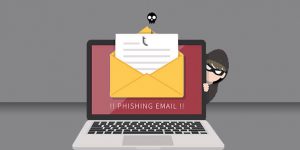
In the digital world, fraudulent activities or cybercrimes are pretty common. Digital crooks are always eyeing your online activity in order to steal your personal details or attack you in some other way. Phishing Emails are one of the ways they attack you online. Therefore, it is essential to know how to recognize such fraudulent emails or messages. Plus, you should also have complete information on how to take action against it. Having knowledge about phishing emails and taking timely actions are crucial to staying safe online these days. So, if you are looking for ways how to report phishing emails on Outlook, then read this post.
This article discusses everything about phishing emails, including how to identify them and how to report phishing emails on Outlook. Plus, you will also learn helpful tips that can save you from becoming the victim of such malicious messages. Let’s dig in!
What Is a Phishing Email?
In simple terms, Phishing emails are fraudulent communications that appear to be sent by a reliable source. These emails are specifically designed to target individuals or organizations; Cybercriminals steal their personal and financial information through these email messages. They often create counterfeit communication that looks 100% genuine and appears to be coming from a trusted business source or other legitimate institution. They are very hard to spot as fake email messages. The hackers usually ask to click on a link or enter any personal or financial information. As a result, the malware-infected files enter the victim’s system to paralyze it. Ultimately, they find a channel to steal money or data. In this way, they create thousands of phishing emails with the hope that some people will become their victims.
In recent times, easy access to chatbots such as ChatGPT and other AI tools has made the work of cyber criminals even easier. Victims find it very hard to discriminate between genuine emails or emails sent by the internet bad actors because of AI. It is true that the advent of artificial intelligence has made cybercriminals more advanced. Hence, organizations and victims should safeguard their sensitive data themselves. There are numerous ways you can safeguard yourself and your organization, which we will discuss in the upcoming section for sure. However, for now, you should know that being suspicious of emails and Teams messages that claim you must click is the best way to stay safe!
Top 6 Reasons for Phishing Emails
Undoubtedly, phishing emails are not designed for your good. The sole purpose behind these emails is to attain some gain, whether financial or otherwise. They are pretty common and robust cyber threats that cyber crooks use for various purposes, such as:
1. Attain Financial Gain
Digital crooks send phishing emails to steal your sensitive financial information. This includes your bank account details, net banking credentials, or credit card numbers, etc. They then use these details to steal your money.
2. Identity Theft
Well, identity theft is another reason cyber criminals send phishing emails. When it comes to identity theft, they majorly focus on stealing your addresses, date of birth, Social Security numbers, and other personal credentials.
Wondering how?
Well, they further use this information to get legit documents and phone numbers, open new accounts, apply for loans, or engage in other fraudulent activities.
3. Gain Access to Your Systems

Some phishing emails are designed to install malware or spyware on your systems. More often than not, emails containing links or attachments are designed to spread ransomware in your systems so that they can have access to your system. The moment you click on these links, they get access to your system. Once they have access to your system, they can use it to monitor your activities, steal data, or use it as a launchpad for further attacks.
4. Steal Your Login Credentials
Phishing emails are also designed to fetch an individual’s login credentials for various accounts, including email accounts, social media handles, corporate networks, etc. Once they have your login credentials, unauthorized access to all your accounts becomes possible, resulting in data breaches and potential exploitation.
5. Steal Trade Secrets
Some phishing emails are specifically created to gather trade secrets or sensitive information from targeted individuals or organizations, such as the Intelligence department, defence, and so on. These attacks are often carried out for large-scale political or economic gain.
6. Instil Fear Among People
Phishing emails are also created to instill fear and dread among people in order to exploit humanity. These emails are designed in such a manner that people get convinced to take prompt actions that compromise their security.
So, these are some of the reasons phishing emails are created. Knowing these reasons can help you recognize these emails and exercise caution when encountering similar ones in the future. In addition, it will assist you in implementing effective measures to safeguard your personal and organizational information. Let’s now discuss the most important part of this post, that is how to identify such emails. Take a look…
Tips To Identify Phishing Emails and Safeguard Yourself
Go over the following pointers to know how to identify phishing emails and prevent yourself from getting target of such emails…
1. Identify Urgent and Threatening Language

Often, phishing emails come with urgent or threatening language to rush victims into action. Be suspicious of such language. Example: “Urgent call to action or threats.” Such emails are designed in a way that lures to click on the link provided along with them. They do not give you the time to think about the potential risks or harmful consequences. You may feel an urge to use their manipulative language and take action according to their instructions. BUT that’s not how you should react to these emails. Instead, you should be very suspicious of such emails. Whenever you get such messages, you should slow down and think about their authenticity. It is better to verify the legitimacy of such messages through other means. If you have a trusted advisor, you should contact him. He may warn you about its sensitivity.
2. Hover Your Mouse Before You Click a Link
Before clicking any link, you should hover your mouse over the link to reveal the site’s URL. Then, you should make sure the URL link is not deceptive. The URL address should match the name of the link typed in that email message.
Related Article: What is a Malicious URL | How do I block Malicious URLs?
3. Fake Email Domains
You may get an email message or team message from a reputed institution or company but with a very irregular domain. Suppose you get a message from Twitter but the domain name may not look real and authentic. This signals a scam. Do not open such emails from unauthorized domains. Also, take care of subtle spelling mistakes. For instance, the bad internet actors can fireplace 0 with o to make it look real. So, whenever you open any email message or take any action on it, you should pause and think twice.
4. Attachments from Unknown Senders or Uncommon Extensions
Malware actors often target individuals with malware-infected files in their phishing emails. They usually ask them to download attachments from uncommon extensions such as (.exe, .scr, or .zip). It’s crucial to confirm the legitimacy of the sender institutions prior to opening the attachment. Do not click on such unknown attachments as they can be malware-infected files. Know that these malware-infected files are designed to steal your personal and financial data. Hence, be wary whenever you receive such an email.
5. Well-crafted or Structured Emails

Another sign of a phishing email is its well-crafted structure or language. And AI has made it possible for cybercriminals. Earlier, phishing emails used to have numerous errors, such as typos, grammatical errors, or incohesive language. But that’s not the case today. The advancement and easy access of chatbots have completely transformed this. Now, phishing emails look more refined and well-structured, all because of modern AI tools.
6. Generic Salutations or Greetings
These days, sending personalized emails has become a breeze. However, phishing emails still come with generic salutations or greetings, such as Dear Sir or Madam. So, don’t be trapped by this at all! If you see any message that starts with generic greetings such as Dear Sir or Madam, then it indicates a phishing email. Your bank or shopping site will never send such non-personalized messages in today’s growing technological landscape.
7. Emails Asking to Supply Login Credentials, Personal or Financial Information
For once and all, you should know that no bank or online platform will ever ask you for your personal credentials. If at all you receive an email from your bank or any other institute asking for your financial login details, it’s a red flag. Verify the sender of the emails first in case you have received any suspicious emails. Often, such emails ask you to enter your login credentials, credit card information, or any other confidential information. You should treat such emails with extra caution. Be cautious of deceptive email messages that try to trick you into visiting fraudulent links and sharing your credit card information. Be cautious with the information you provide as it could potentially result in unauthorized access to your bank account. Therefore, it is important to exercise caution and think critically before sharing any sensitive information with unverified sources. Oftentimes, the unauthorized links can appear deceptively similar to genuine authorized links.
8. Rewards or Offers for You
In today’s world, the easiest way to lure people is to offer them lucrative rewards. NEVER BE LURRED! If you get any email message that offers you any kind of reward points or offers, it can be a phishing email. For instance, “Click this link to win reward benefits for a free smartphone” is one of the ways they lure you. Don’t ever get trapped in such rewards. Just think – why would somebody give you a reward when you haven’t even filled out any form or participated in any such activity? This kind of reward benefits in the emails simply indicates phishing emails. So, without any delay, report this phishing email.
Detailed Article: Methods for Identifying a Phishing Scams Email
Let’s now see how to report phishing emails in Outlook. Here we go…
How to Report Phishing Emails in Outlook?
It is always recommended to pause and think twice before taking any action on email. If you find any email message that raises the red flag of a phishing email, it is better to report the scam. Microsoft has made it very easy for users to report such incidents. You need to visit the Microsoft Outlook.com website to report it. Go over the following steps to learn how to do it:
STEP 1: First off, select the message or messages that are phishing and you want to report
STEP 2: Then, head over to the reading pane given above.
STEP 3: Select Junk>Phishing>Sender to report the email.
How do you Report Phishing Emails in Outlook’s Mobile App?
It takes only a few minutes to report phishing emails through the Outlook mobile app. Here are the steps that you should follow to report red-flagged emails via it:
STEP 1: Go to the Google Play Store or App Store to download the Microsoft Outlook app
STEP 2: Open the app with Microsoft login credentials
STEP 3: Scroll down the screen to find the email that you want to report and select that phishing email
STEP 4: Then, navigate to the top right corner of the screen
STEP 5: Now, click on the three dots next to the trash icon, and a pop-down menu bar will appear on the screen. Now, select the option Report Junk
STEP 6: Now, two options – Junk or Phishing will appear; choose the option of Phishing to report the email.
And you are done!
The Bottom Line
So, this is all about Phishing emails and the ways you can identify them. Hopefully, this article has been informative for you and helped you understand ways to report phishing emails on Outlook. In brief, you can easily report phishing email messages if you are a Microsoft Outlook user. The Microsoft Outlook team will review your complaint regarding the phishing email. This not only helps you to block further messages from that malicious sender but also helps other people. On your registered report, the Microsoft Outlook team may ban that fraud sender’s account for an unlimited period. So, use these tips to stay safe and identify phishing emails! Your safety should be your priority, whether online or in general! So, be safe!






